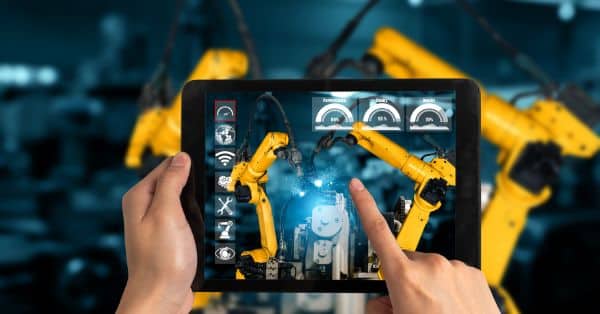Understanding 5G and IoT
The Internet of Things (IoT) has been steadily gaining momentum, revolutionizing industries by connecting devices and enabling data-driven decision-making. The advent of 5G technology is set to unlock the full potential of IoT, providing the necessary infrastructure to support a vast network of connected devices with ultra-low latency, high bandwidth, and enhanced reliability. This article will discuss the impact of 5G on IoT, explore the benefits of 5G-enabled IoT solutions, and highlight innovative use cases across industries. Additionally, we will examine the challenges and considerations associated with implementing 5G IoT solutions.
5G is the fifth generation of mobile networks, designed to deliver faster speeds, ultra-low latency, and the ability to connect a massive number of devices simultaneously. The Internet of Things (IoT) refers to the interconnection of everyday objects embedded with sensors, software, and other technologies, to collect, transmit, and exchange data over the Internet.
The 5G and IoT combination will enable a new era of smart devices and applications that require real-time data processing and seamless connectivity. The high-speed, low-latency, and massive device connectivity provided by 5G will serve as the backbone for IoT ecosystems, facilitating the development of innovative use cases across industries.
Benefits of 5G-Enabled IoT Solutions
- Ultra-Low Latency: 5G technology offers ultra-low latency, which is critical for applications that require real-time data processing, such as autonomous vehicles, telemedicine, and industrial automation.
- High Bandwidth: 5G provides high bandwidth, which enables the transmission of large volumes of data from IoT devices, supporting applications such as video surveillance, smart cities, and augmented reality.
- Massive Device Connectivity: 5G networks can support the connection of a vast number of devices, addressing the growing demand for IoT connectivity in various industries.
- Enhanced Reliability: The reliability of 5G networks ensures consistent connectivity and minimal downtime for IoT devices, which is crucial for mission-critical applications.
- Network Slicing: 5G technology enables network slicing, allowing operators to create dedicated virtual networks tailored to specific IoT use cases, ensuring optimal performance and efficiency.
Innovative Use Cases of 5G-Enabled IoT Across Industries
- Smart Cities: 5G-enabled IoT solutions can transform urban environments by facilitating the efficient management of resources, traffic control, public safety, and environmental monitoring. Smart streetlights, traffic sensors, and air quality monitors can communicate seamlessly over 5G networks, enabling real-time data analysis and decision-making.
- Industrial Automation: In manufacturing and industrial settings, 5G-enabled IoT devices can support real-time monitoring and control of machinery and processes. This level of connectivity can enhance productivity, minimize downtime, and enable predictive maintenance.
- Telemedicine: 5G technology can support the growth of telemedicine, enabling real-time remote consultations, diagnostics, and even remote surgeries. The low latency and high bandwidth provided by 5G ensure smooth and reliable communication between healthcare professionals and patients.
- Augmented Reality (AR) and Virtual Reality (VR): The high-speed, low-latency connectivity provided by 5G networks can enable more immersive and responsive AR and VR experiences. 5G-enabled IoT devices can support seamless and engaging AR and VR applications in retail, entertainment, and education industries.
- Smart Agriculture: 5G connectivity can revolutionize the agriculture industry by enabling IoT solutions that facilitate precision farming, crop monitoring, and livestock management. Real-time data from sensors and drones can help farmers make informed decisions about resource allocation, irrigation, and pest control.
- Energy and Utilities: The combination of 5G and IoT can optimize energy and utility resources management by enabling real-time energy consumption monitoring, predictive equipment maintenance, and efficient load balancing.
- Autonomous Vehicles: The ultra-low latency and high bandwidth provided by 5G are essential for autonomous vehicles’ safe and efficient operation. Real-time data processing and communication between vehicles, infrastructure, and pedestrians ensure the safety of passengers and facilitate more efficient traffic management.
Challenges and Considerations in Implementing 5G IoT Solutions
- Infrastructure Investment: The deployment of 5G networks requires significant investment in infrastructure, including the installation of new antennas, base stations, and fiber-optic connections. Companies and governments must carefully consider the costs associated with deploying and maintaining 5G infrastructure.
- Security and Privacy: As 5G technology enables a more extensive and complex network of connected devices, ensuring the security and privacy of data becomes increasingly crucial. Organizations must implement robust security measures to protect IoT devices and networks from cyberattacks and data breaches.
- Interoperability and Standardization: To fully realize the potential of 5G-enabled IoT solutions, devices, networks, and systems must be interoperable and adhere to industry standards. Developing and adopting standardized protocols and technologies is essential for seamless integration and communication across IoT ecosystems.
- Spectrum Allocation: The availability and allocation of radiofrequency spectrum for 5G networks is a significant challenge, as operators must navigate complex regulatory environments and compete for limited resources.
Conclusion
The age of 5G is set to unlock the full potential of the Internet of Things, enabling a new generation of connected devices and innovative applications across industries. The ultra-low latency, high bandwidth, and massive device connectivity provided by 5G technology will serve as the foundation for IoT ecosystems, driving growth and innovation in areas such as smart cities, autonomous vehicles, industrial automation, telemedicine, AR/VR, smart agriculture, and energy and utilities.
However, organizations must carefully consider the challenges and considerations associated with implementing 5G IoT solutions, including infrastructure investment, security and privacy, interoperability and standardization, and spectrum allocation. By addressing these challenges and investing in the necessary resources and expertise, businesses can harness the power of 5G-enabled IoT solutions to drive innovation, optimize operations, and maintain a competitive edge in the market.















































